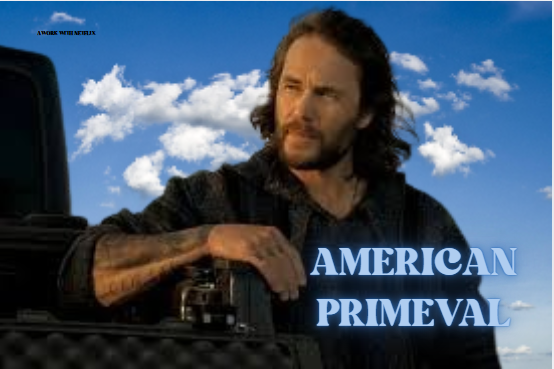
The United States of America, a beacon of modern democracy and progress, was forged in the crucible of untamed wilderness and raw ambition. Its history, often chronicled through grand battles and political upheavals, is equally rooted in the landscapes and the primal forces that shaped its earliest inhabitants and settlers. “American Primeval” invites us to journey back to the beginnings, exploring the interplay between humanity and nature, the resilience of indigenous peoples, and the profound transformations that birthed a nation.
The Land Before Time: A Pristine Wilderness
Long before the arrival of Europeans, the American continent was a vast, untamed wilderness. Towering forests, expansive plains, rugged mountains, and sprawling river systems defined the land. This primeval environment was not merely a backdrop but a central player in the story of America’s origins. Indigenous peoples, who inhabited the continent for thousands of years before European colonization, developed a deep and symbiotic relationship with the land. They shaped their environments through controlled burns, irrigation, and sustainable hunting practices, creating thriving ecosystems. The idea of a “pristine wilderness” untouched by human hands is a myth—Native Americans were skilled stewards of the environment, leaving an indelible mark on the land.

Photo Credit: Netflix
Indigenous Nations: The First Americans
The pre-Columbian era was a tapestry of diverse cultures and civilizations, from the mound builders of the Mississippi Valley to the cliff dwellers of the Southwest. Tribes such as the Iroquois Confederacy, the Navajo, and the Lakota developed rich traditions, governance systems, and trade networks that spanned vast distances. These societies were deeply interconnected with their environments.
The buffalo sustained the Plains tribes, the salmon enriched the cultures of the Pacific Northwest, and maize became a cornerstone of agriculture across much of North America. Oral traditions and spiritual practices reflected a profound respect for nature, emphasizing balance and harmony. European colonization disrupted this equilibrium. Diseases brought by settlers decimated indigenous populations, and the relentless push for land led to centuries of displacement and conflict. Yet, the resilience of Native American cultures endures, offering invaluable insights into sustainable living and environmental stewardship.
The Arrival of European Settlers
The arrival of Europeans marked the beginning of profound transformation. Seeking wealth, freedom, and new opportunities, settlers brought with them a vision of taming the wilderness. To the Puritans and pioneers, the vast forests and open plains represented both opportunity and challenge—a blank slate upon which to build a new civilization. The first English settlements, like Jamestown in 1607 and Plymouth in 1620, struggled against the harsh realities of the New World. Starvation, disease, and conflicts with Native Americans tested the settlers’ resolve. Survival depended on adapting to the land and learning from indigenous practices. Over time, the settlers’ agricultural innovations and resource exploitation transformed the landscape, paving the way for expansion.

Manifest Destiny and the Push Westward
The concept of “Manifest Destiny” emerged in the 19th century, driving American expansion across the continent. This belief in a divine mandate to spread democracy and civilization justified the displacement of indigenous peoples and the relentless conquest of nature. The Louisiana Purchase, Lewis and Clark’s expedition, and the California Gold Rush were milestones in this westward push. While Manifest Destiny fueled progress, it also exacted a heavy toll. Entire ecosystems were altered as forests were cleared, rivers were dammed, and bison were hunted to near extinction. Indigenous nations faced broken treaties and forced removals, such as the infamous Trail of Tears. The clash between the primeval and the modern was stark and often brutal.
Nature as Inspiration and Challenge
Despite the destruction, America’s primeval landscapes remained a source of inspiration. The Romantics of the 19th century, like Henry David Thoreau and Ralph Waldo Emerson, found spiritual renewal in nature’s grandeur. The Hudson River School of painters captured the sublime beauty of unspoiled wilderness, celebrating it as a cornerstone of national identity. Yet, these landscapes also posed challenges. Pioneers braved harsh winters, droughts, and rugged terrain to carve out lives on the frontier. The wild remained a test of endurance and ingenuity, shaping the American character into one of independence and resilience.

Photo Credit: Netflix
Industrialization and Environmental Reckoning
The 19th and early 20th centuries brought rapid industrialization, further altering the primeval landscape. Railroads cut through mountains, factories polluted rivers, and cities sprawled across once-pristine land. Progress came at the expense of nature, prompting figures like John Muir to advocate for conservation. Muir’s efforts, along with those of President Theodore Roosevelt, led to the establishment of national parks, preserving remnants of America’s primeval beauty. Yellowstone, Yosemite, and the Grand Canyon became symbols of a nation’s commitment to its natural heritage.
The Echoes Today
America’s primeval origins continue to resonate in contemporary culture and policy. Indigenous movements, such as the fight to protect sacred sites and natural resources, highlight the enduring connection between Native peoples and their ancestral lands. Environmental challenges, from climate change to deforestation, remind us of the fragility of the ecosystems that once defined the continent. The resurgence of interest in sustainability and rewilding reflects a growing recognition of the lessons embedded in America’s primeval past. Urban planners incorporate green spaces into city designs, farmers adopt regenerative practices, and conservationists work to restore habitats for endangered species. These efforts echo the wisdom of the first Americans, who lived in harmony with the land for millennia.

Conclusion
“American Primeval: Echoes of a Nation’s Origins” invites us to reflect on the complex interplay between humanity and nature that shaped the United States. From the stewardship of indigenous peoples to the ambitions of settlers and the challenges of industrialization, the primeval forces that defined America’s early days continue to influence its present and future. As we navigate the modern era, the lessons of America’s primeval past offer a blueprint for resilience, sustainability, and harmony with the natural world. By honoring the echoes of our origins, we can build a future that respects the land and the legacy it holds.





1 thought on “American Primeval: Echoes of a Nation’s Origins on Netflix”